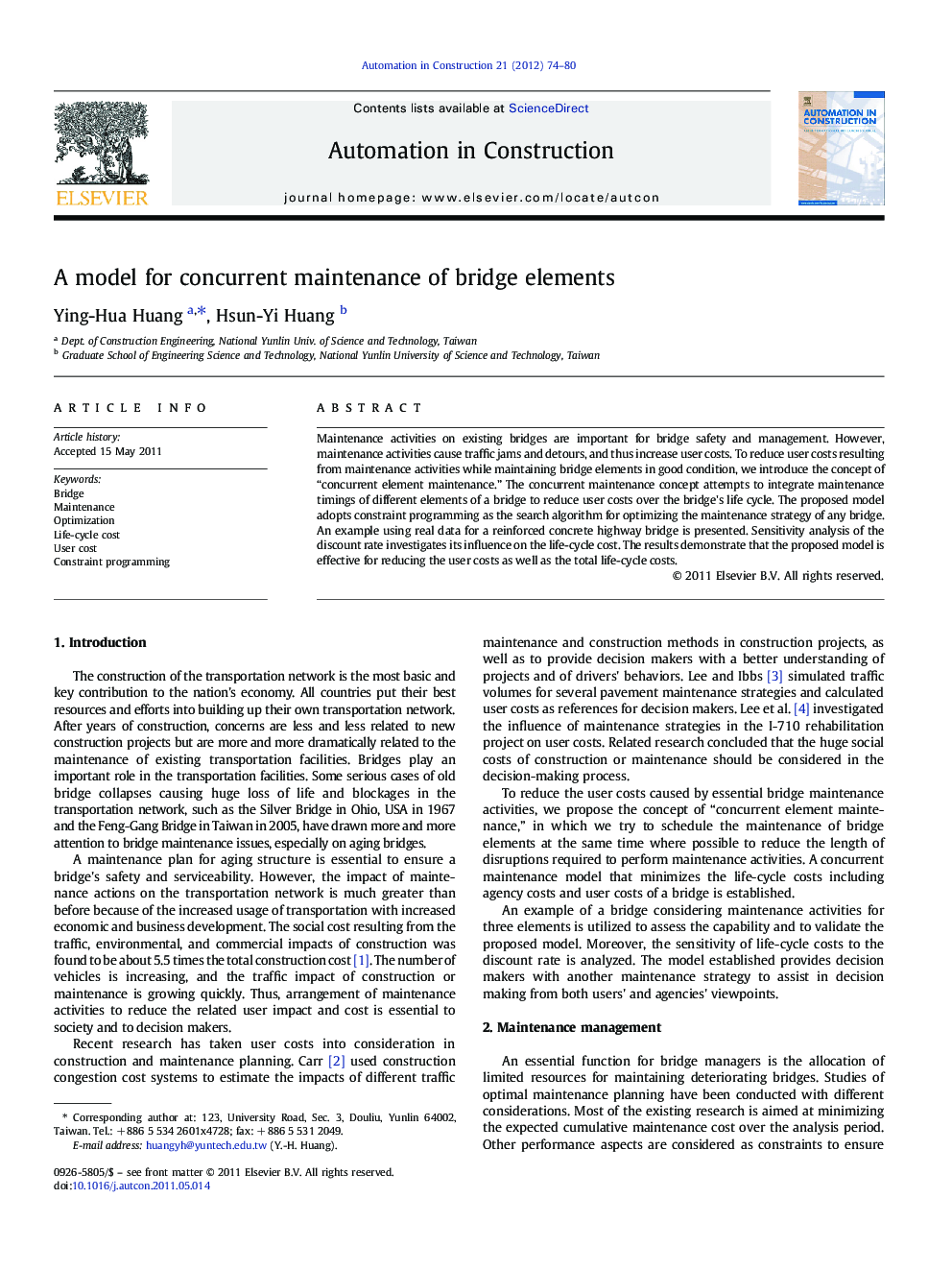| Article ID | Journal | Published Year | Pages | File Type |
|---|---|---|---|---|
| 247026 | Automation in Construction | 2012 | 7 Pages |
Maintenance activities on existing bridges are important for bridge safety and management. However, maintenance activities cause traffic jams and detours, and thus increase user costs. To reduce user costs resulting from maintenance activities while maintaining bridge elements in good condition, we introduce the concept of “concurrent element maintenance.” The concurrent maintenance concept attempts to integrate maintenance timings of different elements of a bridge to reduce user costs over the bridge's life cycle. The proposed model adopts constraint programming as the search algorithm for optimizing the maintenance strategy of any bridge. An example using real data for a reinforced concrete highway bridge is presented. Sensitivity analysis of the discount rate investigates its influence on the life-cycle cost. The results demonstrate that the proposed model is effective for reducing the user costs as well as the total life-cycle costs.
Research Highlights► A concept of “concurrent element maintenance” is introduced to integrate maintenance timings of different bridge elements. ► The objective is to minimize the life-cycle costs of a bridge. ► Although the agency cost obtained is more than that of the traditional model, it allows for greater user cost savings. ► For the discount rates studied, the B/C ratios indicate the cost effectiveness of the proposed model. ► The proposed model is effective for reducing the user costs and the total life-cycle costs.
